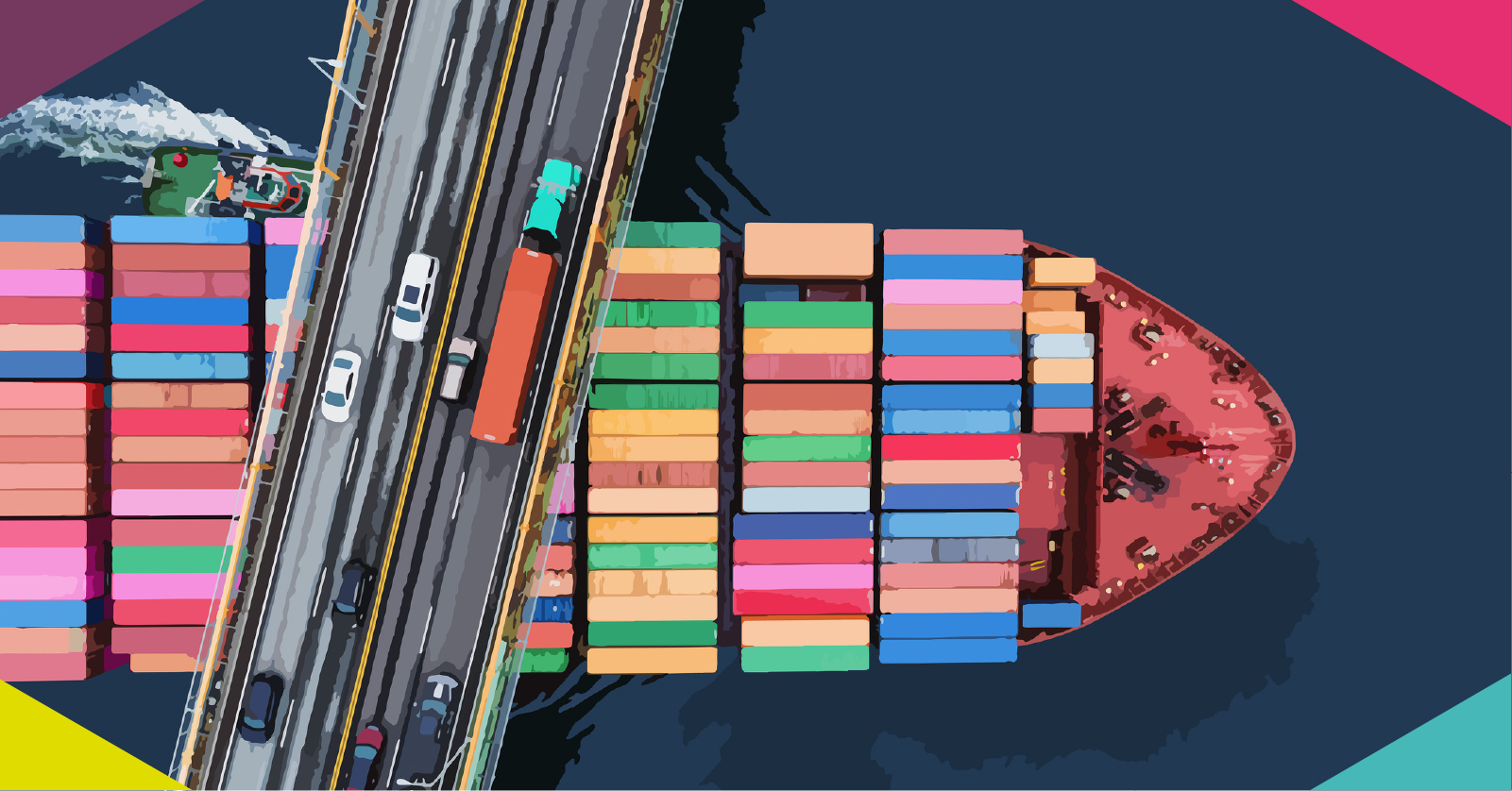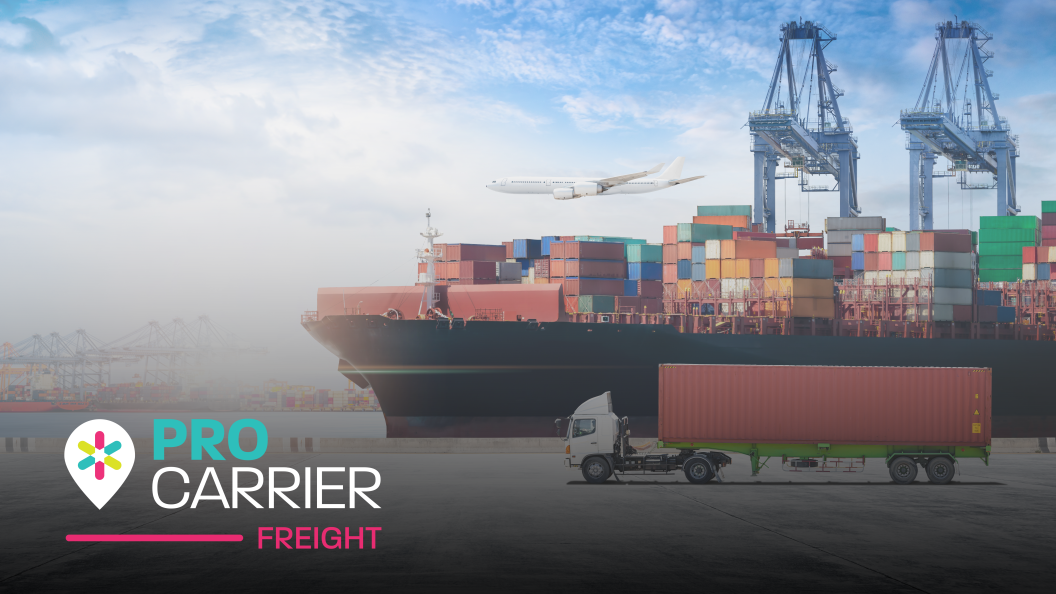What are the Top Modes of Transport
Air, Road, Sea and Rail. These are the four major modes of transport (or types) in the logistics industry. Which method you use will depend on what you’re shipping, where you’re shipping from and where you’re shipping to.
Even then, more than one method may be suitable. That’s why it’s important to understand the advantages and disadvantages for each mode of transport.
Depending on your requirements you will also need to determine which mode of transport has the largest carrying capacity.
Read on as we explain and explore each mode of transport in detail and where they work best while giving you an industry overview.
Road Freight
Road freight is a popular choice for transporting for all manner of goods across the globe. It’s particularly suited to situations where products are being transported across borders and for final-mile delivery to customers’ doors.
It’s a common choice in countries like the USA and Canada, where road freight accounts for the majority of transport, and it can be used in combination with every other mode of transport on this list.
WHAT ARE THE BENEFITS OF ROAD FREIGHT
- There are fewer restrictions on road freight compared to air or sea freight.
- Trucks are easier to track than ships or planes – GPS can let you know where they are at all times
- It’s one of the most financially economical modes of transport
- It’s highly accessible. Every country in the world has a road network. That can’t be said for sea or rail networks
- It’s easy to organise specialist transportation based on your products. Road freight can accommodate hazardous materials, perishable goods and just about anything else
- Door-to-door transport is possible when correctly planned
- It’s easy to adjust routes and timings if necessary
- Uncomplicated packing, shipping and offloading process
WHAT ARE THE DRAWBACKS OF ROAD FREIGHT
- Road freight can take longer than transportation by air or sea and can also be unpredictable due to unforeseen weather or road closures
- It’s not suitable for trans-global transportation
- It’s easier for criminals to target trucks compared to other transport modes
- Size and weight limits apply
- Issues with seasonality can make roads unsafe
- Higher risk of accidents and breakdowns when compared to alternative modes of transport
- It’s slower than other modes of transport
Sea Freight
Sea freight accounts for the vast majority of the world’s trade. More than 90% of all goods are transported by ships.
For an idea of scale: Statista report the 10 largest container ports are responsible for more than 247m TEU throughput in 2021
That’s because ships can carry significantly heavier loads than air freight at a fraction of the cost. As a result, it’s the preferred choice for transporting bulk materials like agricultural produce and raw materials.
Furthermore, its worth noting ocean shipping is the most integral part of the supply chain for most of the worlds industries, cited in this Statista report, making it a backbone of global trade.
Between 2013 and 2019, both the capacity of the global merchant fleet and the volume of seaborne trade increased significantly. During this time span, the volume of goods carried by ships rose by almost 35 percent, while the combined capacity of merchant ships grew by around 17 percent.
WHAT ARE THE BENEFITS OF SEA FREIGHT
- It’s the best way to transport large and heavy goods. Cargo ships can carry thousands of tons, making them perfect for oversized or bulk products
- It’s cheaper than air transportation. And also more environmentally friendly
- Minimal handling is required
- Slow-moving vessels mean goods are less likely to be damaged
- Shipping is rarely impacted by weather conditions
- It has the highest carrying capacity of all freight options
- Sea freight the largest carrying capacity
WHAT ARE THE DRAWBACKS OF SEA FREIGHT
- Not always the most financially economical choice
- Can be inaccessible depending on origin or end destination
- Long transit times make it unsuitable for expedited deliveries
- Any reputable freight forwarder should provide access to a global shipping network with a range of services including FCL and LCL shipments.
Air Freight
Air freight is the go-to choice for speedy delivery. It’s accessible all over the world and a convenient method to move smaller shipments long distances. Given that most major cities have an airport, air freight also lets businesses ship to specific areas or regions.
WHAT ARE THE BENEFITS OF AIR FREIGHT:
- Speed is the biggest benefit of air freight. It’s rare for flights to suffer more than a few hours delay and air freight allows for a much more direct route than road, sea or rail
- The fixed schedule of air freight makes them a reliable choice
- Security is much higher with air freight than other modes of transport, packages often receive the most rigorous protection measures
- The reduced risk of air freight tends to mean lower insurance premiums
WHAT ARE THE DRAWBACKS OF AIR FREIGHT:
- Air freight is one of the most expensive transport methods owing to high fuel costs and additional expenses like security checks
- The nature of air freight means there are restrictions on what can be transported. Size, weight and product types are all restricted.
- It can be risky, given that any crash can result in the complete loss of goods.
Rail Freight
Trains are a vital part of logistics routes across the globe, particularly in Europe and North America, where rail networks are comprehensive. In North America, for instance, rail freight accounts for about 15% of all freight journeys. It’s the ideal choice for organisations that require fast, scheduled and reliable freight in areas of the world where rail networks are strong.
WHAT ARE THE BENEFITS OF RAIL FREIGHT
Trains offer more carrying capacity than road freight
Less chance of delays owing to fixed schedules and the nature of rail journeys
Low environmental impact compared to any other mode of transport. It emits over three-quarters fewer emissions than road freight
A cost-effective solution for long journeys
Particularly good for inter-country transportation
WHAT ARE THE DRAWBACKS OF RAIL FREIGHT
Can be slower than other forms of transport
A lack of accessibility means rail freight isn’t suitable in all locations
No door-to-door service owing to pre-defined routes
Usually requires additional transportation at the end of the journey
Multimodal Shipping: When One Route Isn’t Enough
It’s rarely possible to use one method of freight transport for your cargo’s entire journey. Where multiple methods are required, opting for a multimodal shipping service should always be the first choice.
Multimodal shopping is where cargo is moved from origin to destination using multiple transportation methods. Unlike intermodal shipping, each transportation route is operated by the same carrier under a single contract. That carrier is responsible for the entire journey.
Multimodal shipping has several advantages over intermodal shipping. It’s a much more streamlined service for one. With one company in charge of every leg of the journey, you can deal with a single point of contact who can provide updates and troubleshoot issues about the entire journey. It’s much easier to track your shipment as a result and get realistic timelines. Delivery should also be more efficient because there is no handover process.
Most freight forwarders specialise in multimodal shipping transportation across the globe. For more information on our entire range of services, speak to a member of our team today.
If you are you looking for a partnership that focuses on quality rather than quantity? Talk to someone direct.
Contact us to start the conversation.



